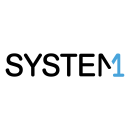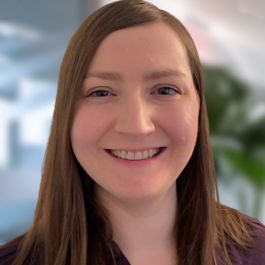“Recalculating route.”
Those two words can provide instant relief on a road trip. Whether correcting for a missed exit, dodging an unexpected roadblock, avoiding traffic or adding a fuel pitstop, responsive and accurate navigation can take car travel from stressful to simple.
Unfortunately, there is no GPS for product roadmapping, but that’s where great product managers come in. With clear starting points and well-defined destinations, product managers can help keep priorities clear, resolve roadblocks and adjust priorities and timelines in response to new data and opportunities.
For Rick Martinez Garcia, senior product manager at Hoag, data-driven decision making and well-defined documentation help keep disparate teams integrated through every step of a product roadmap.
“Like leaving breadcrumbs on the trail together, when you finally get to the destination, you can see exactly how you got there,” he said.
Clear documentation throughout the product roadmap also supports making the right decisions to move ahead. With flexible processes throughout the development cycle, teams can avoid long detours in the wrong direction.
“Always take time to re-evaluate,” System1 Product Manager Henry Fellows said. “The earlier these decisions and evaluations happen, the more efficient your team will be.”
Built In LA heard from Martinez Garcia, Fellows and three other product managers about how a proactive and responsive approach to product roadmapping keeps their teams moving forward together — and in the right direction.
Founded in 1952, Hoag has been providing personalized healthcare solutions in Orange County for decades. Hoag Digital Health brings Hoag’s legacy of excellent care to a new era with customer-centric digital products.
How do you ensure there’s alignment across teams from the outset when developing a product roadmap?
Most of us love good surprises, but not many folks like bad ones. Ideally, even in discovery, the product team has kept engineering, design and all relevant stakeholders within the team engaged. This can be as simple as integrating partners into the process itself from customer interviews, research, opportunity mapping and even collaborative product road mapping. Coupled with direction from a well-defined business strategy, this should drive alignment on what your product is, what it is not and what you are trying to achieve from the onset. By integrating the team early, there is less mystery and surprise in understanding your end user, defining the business strategy, solution space or outcomes you will be focusing on.
At Hoag, we’ve taken the initiative to integrate the entire team into our continuous discovery work across our product lines, and it’s been a catalyst for collaboration and ingenuity.
Most of us love good surprises, but not many folks like bad ones.”
How did you maintain that alignment throughout the development cycle?
The development cycle can bring change and sometimes additional noise that can easily detract from the mission ahead. At Hoag, our business and product outcomes are anchored by our mission and vision, and this serves as part of the foundation when establishing a product roadmap. As the PDLC progresses and decisions may need to be made these provide a good balance of qualitative and objective measures to maintain alignment and clarity when the wind and the seas start changing. If the business and product outcomes are data-driven and include clearly defined metrics that everyone is already aligned with, it makes it easier to steer the ship.
Did the project needs change during the development process? How did you re-prioritize the product roadmap and keep teams aligned?
There are challenges in the healthcare industry that make scope creep a particular risk during the development process. As we began to tackle silos in the industry, we learned of additional technical and operational barriers during development. It became apparent that there would be a speed impact if we wanted to keep the original product scope, and of course, timelines would suffer as well.
Zooming out as a team and acknowledging the stage of the product life cycle instead of the weekly dates helped reorient us to goals within a phased approach. Zooming back into the user needs, the value we were trying to create and the business outcomes we were trying to achieve helped bring clarity to the team and align on prioritization moving forward.
System1 builds desktop and mobile apps, search engines, and online publications that empower consumers with information while respecting their privacy.
How do you ensure there’s alignment across teams from the outset when developing a product roadmap?
In my opinion, there are two key components of gaining broad consensus for a roadmap. First, the easiest way to gain alignment on roadmap components across the organization is to make sure everything you are planning to build supports a pillar of your company’s macro, long-term strategy. Each project or deliverable must support these company-level objectives in some way. The second component is to have a user-driven mindset when prioritizing features — know your customer and what is important to them in the context of what you’re building.
Our team benefitted from adhering to these principles during this past year. At System1, we want to grow our ability to source profitable web traffic, while also maintaining diversity in traffic sources. To meet these goals, we launched integrated data analytics support for several new buy side networks. Aligning these integration projects with System1’s growth strategy made our efforts an easy sell to internal partners, while close partnership and constant engagement with users helped us to ensure we were shipping maximum value from ideation to launch.
Have a user-driven mindset when prioritizing features.”
How did you maintain that alignment throughout the development cycle?
We stayed in sync with our users and stakeholders through frequent over-communication of key decisions that had to be made. Suppose we couldn’t meet full feature parity for a certain buyside network within our greater platform — why is that? What is standing in the way, and do we sacrifice our scalability goals by building a workaround? Rather than building for the sake of hitting deadlines, we try to be very vocal about decisions and their macro impacts as soon as they are identified.
Did the project needs change during the development process? How did you re-prioritize the product roadmap and keep teams aligned?
Small decisions oftentimes have the potential to throw a wrench in a product or feature development cycle. I think the most interesting case studies of having to re-factor the tactical plan of our project arose from minor nuances or quirks that conflicted with a core objective for providing a data platform for tracking web traffic analytics. We need to be able to track and model a user journey from traffic source to monetization, and we can’t do this without key data elements. These “building blocks” are conceptually normalized in our data platform but can vary between buy side networks.
We encountered a case that disrupted development due to an unexpected informational organization for a particular network: We aligned with our users and stakeholders that modeling the data will take longer than expected due to this nuance, but that the extra time spent will be worthwhile in the long run. Correct data management in that instance would pay off because we create no tech debt in the short term, and full integration means that digital campaigns will be leveraging System1’s most impactful resources.
ChowNow is an ordering platform focused on helping local restaurants thrive.
How do you ensure there’s alignment across teams from the outset when developing a product roadmap?
Always providing as much context at the start of a project is key, especially with cross-functional team members who may have varying levels of comfort with a product’s core users or metrics. I love to “start with why,” from Simon Sinek’s classic TEDx talk. This ensures we are aligned on the user problem to solve, any initial hypotheses, as well as relevant data or research that support these. Depending on the planning framework, some of this information hierarchy may already be baked into your process, but clearly articulating this in an easily digestible artifact like a brief or narrative ensures shared understanding and invites collaboration.
At ChowNow, we’re currently preparing for our quarterly planning process, collaborating closely with our peers in marketing and business operations as well as design and engineering. I started by organizing a list of opportunities with the “why” for each, sized by estimated impact within Miro. This provides a structured, dynamic and clean way to source others’ perspectives and revise opportunities.
How did you maintain that alignment throughout the development cycle?
Success is won through the contribution of each cross-functional team member. Maintain alignment with the core working group throughout execution during regularly scheduled syncs to highlight updates, learnings from research, ad-hoc analyses or experiments. These provide a real-time opportunity for each to understand progress and provide new ideas that could help add new value, while also providing healthy accountability for yourself and others. Teamwork really does make the dream work!
After context setting, through several rounds of collaboration as well as estimates on the level of effort, I’ll put together and share a sequenced roadmap for the quarter. I meet weekly with our marketing and business operations team members where I’ll share updates based on learnings gained during execution. I strive to get into a healthy rhythm of conducting some form of initial research and prototyping before development paired with experimentation post-launch to validate impact. These syncs are great mediums to share these learnings, and oftentimes the conversation helps to create new hypotheses.
Always provide a healthy dose of ‘why.’”
Did the project needs change during the development process? How did you re-prioritize the product roadmap and keep teams aligned?
Plans often change, and that’s okay. When they do, remember to communicate with others and always provide a healthy dose of “why,” collect questions, source additional ideas and provide recommendations. You reach alignment across teams by listening and thoughtfully providing your expert opinion — you’re human first, expert second!
Your core working group will be crucial to helping you ideate and align on options. From there, sharing updates with key stakeholders through a regularly scheduled sync, ad-hoc email, @here or favorite form of shouting from the rooftops helps maintain alignment with that new plan forward — caring is oversharing! It may not feel like it in the moment, but these end up being great opportunities to prove your leadership, agility and humility, so lean into these when they arise to build continued trust.
Epirus is building the world’s first software-defined electromagnetic pulse (EMP) system, as well as systems that use machine intelligence for the next generation of energy and power management.
How do you ensure there’s alignment across teams from the outset when developing a product roadmap?
At Epirus, we’re structured as a matrixed organization to ensure alignment on our product roadmap. Products are born as ideas in our internal innovation lab, which serves as an incubation space. With input from engineering, manufacturing, business development, finance and other departments, noteworthy research and development ideas are further developed, tested and explored — after which they can become a product workstream residing under the product team. This recently implemented structure allows for clearer delineation between concepts and products and ensures we are delivering the highest value for our customers in as short time frames as possible.
How did you maintain that alignment throughout the development cycle?
As the product marketing manager, my role is exactly that — to ensure alignment across teams at the onset and throughout the development cycle. My primary mechanism for achieving this is simple: Be present, and when communicating internally, err on the side of over-communicating.
We aren’t just doing engineering for engineering’s sake. Each and every development process here at Epirus has a clear value proposition for our customers, and we keep that top of mind. As a bridge between the business side of the house and the engineering side of the house, it’s my role to remind teams of this.
We think of ourselves as ‘masters of imperfection.’”
Did the project needs change during the development process? How did you re-prioritize the product roadmap and keep teams aligned?
As a rapidly-growing technology company, project needs change regularly. It’s the nature of our industry — and while change can be paralyzing for some, we thrive on it. Here at Epirus, we think of ourselves as “masters of imperfection.” We don’t expect to get it right every time, but we fail fast and learn from our mistakes faster to ensure we are delivering the most innovative, effective and safe products to our customers. We stay agile in everything we do as a company – ensuring we’re able to respond quickly to change and the always-evolving needs of our customers. Teams know this often means re-prioritizing and re-scoping, but that’s just part of our workflow here at Epirus. Our ability to perform during periods of change all comes back to the matrixed organization and cross-team communication.
Enervee wants to help shoppers make efficient choices and supports energy-conscious buying through data science, behavioral science, digital product design, and marketing.
How do you ensure there’s alignment across teams from the outset when developing a product roadmap?
It’s a collaborative process from start to finish. Typically, we’ll start roadmapping with a brainstorming session to jot down all of the high level initiatives that we’d like to tackle, including any must-do items from a business perspective and enhancements we’d like to see that would improve quality of life or customer experience. These are informed by any contractual commitments as well as analytics, market trends and user behavior insights. We’ll take those virtual sticky notes and plot them out on a grid of impact versus effort, so we can more easily assess any low hanging fruit and plan out the longer term items. This was particularly helpful as we embarked on addressing post-MVP items for our recently launched commerce platform so we knew where to focus our efforts in improving the product.
React and adjust accordingly.”
How did you maintain that alignment throughout the development cycle?
From that team brainstorming and mapping effort, we then start to define each initiative further within a product requirements document and size within development teams, ultimately leading to a published roadmap with estimated time frames for each initiative. Having both the roadmap and requirements documentation in a public place is key for all teams to rally around. We also have frequent check-ins on the progress of the product increment to report back on percentage complete for each initiative, any known dependencies and risks or changes to the original plans so all teams can react and adjust accordingly.
Did the project needs change during the development process? How did you re-prioritize the product roadmap and keep teams aligned?
Changes are almost always guaranteed as we move through the development process, either as a result of unknown scope or changing requirements or business needs. Weekly touch points help us identify any changes quickly and assess the new complexity. Our prioritization rubric is also crucial in determining where to place that new scope, whether it needs to be prioritized over existing work or can wait. Additionally, early communication is important in letting stakeholders know about these changes so they can update their timelines or set new expectations as needed.


















